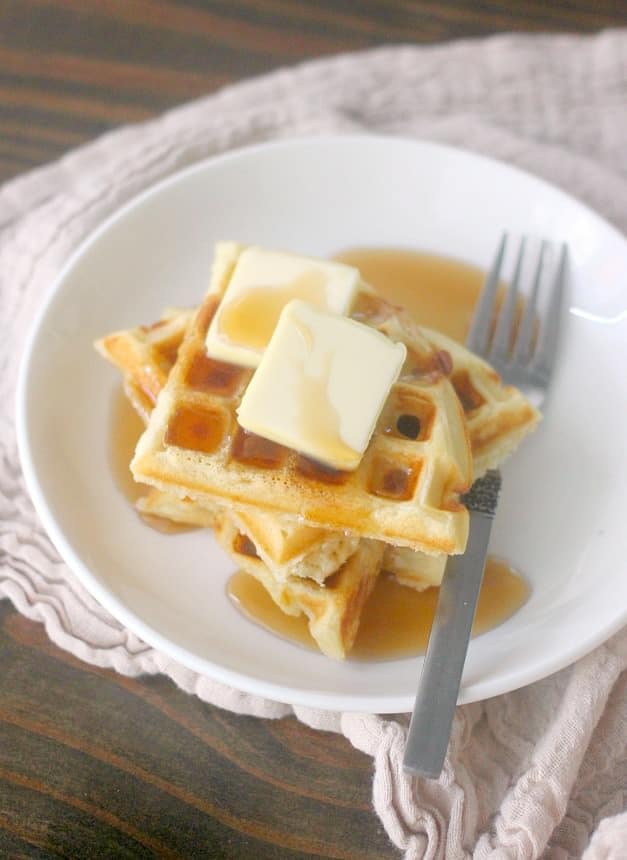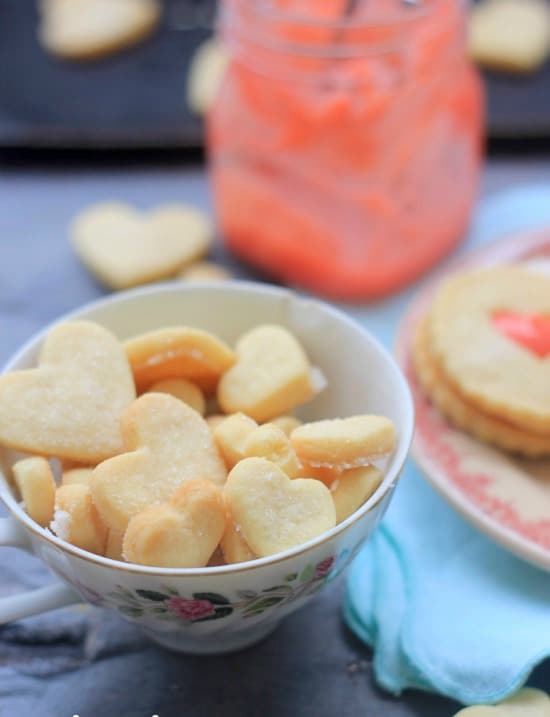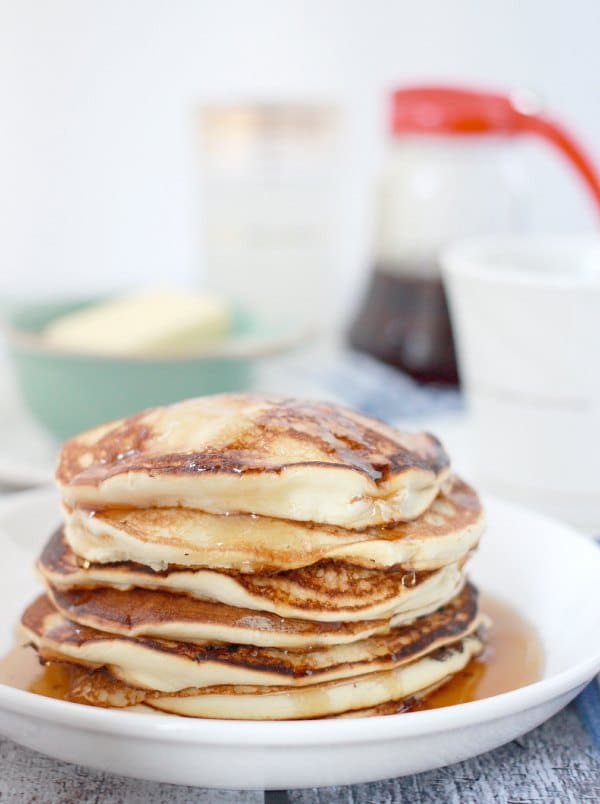Baking Science: Baking Soda and Baking Powder
Learn the difference between baking soda and baking powder and what to do in a pinch if you do not have one on hand!

Baking soda and baking powder are both chemical leavening agents used in baking. This means that when these two substances are mixed into a dough or batter and baked, a chemical reaction occurs causing the baked goods to rise. The leavening process not only raises the baked good, but also makes it more tender and supports browning.
While baking soda and baking powder serve the same main function, the way in which they work to make a baked good rise is different.
Watch the Baking Soda vs Baking Powder Video
What Is Baking Soda?
Baking soda, also sometimes referred to as “sodium bicarb,” is plain sodium bicarbonate. On the ph scale, it is considered a basic. In order for it to do it’s job of leavening your baked good, it needs an acidic component to react with. When the basic properties of baking soda mix with the acidic properties of another ingredient the baking soda works to neutralize the acid and this is what causes the air bubbles (carbon dioxide) that leaven the baked good.
In baking, the usual acidic components include: buttermilk, brown sugar, molasses, vinegar, yogurt, lemon juice (or other citrus juice), natural cocoa powder (dutch processed cocoa powder is not acidic), and chocolate.
Baking soda is ideal to be used instead of baking powder if there is an acidic component because it is about four times more effective than baking powder.
What Is Baking Powder?
Baking Powder is baking soda (sodium bicarbonate) that is already mixed with an acidic ingredients. Therefore, baking powder can be used on its own to leaven baked goods without the need for an acidic ingredient.
Baking powder works in the same way that baking soda does by creating air bubbles (carbon dioxide) which cause the baked good to rise. Most baking powders these days are also “double acting” which means that they actually contain two types of acids, one that reacts when it is hydrated and the other that reacts to the heat of the oven.
Baking powder is about four times weaker than baking soda and it does have a shelf life. Pay attention to the expiration date. If you are in doubt if your baking powder is still good, you can test it.
To test if your baking powder or baking soda is still active, add a teaspoon to about 1 cup of hot water. If it is still fresh, it will start bubbling quite a bit. If it does not bubble, throw it out and get a new container.
Why Do Some Recipes Use Both Baking Soda and Baking Powder?
Recipes that call for both baking soda and baking powder usually have to do with the fact that the recipe contains acid that needs to be neutralized by the baking soda, but possibly not enough to do the amount of leavening desired. The baking powder picks up the slack. Additionally, since baking powder is double acting, it gives even more rise to the baked good.
Substituting Baking Soda and Baking Powder:
Because baking is a science, it is not ideal to substitute baking soda and baking powder in most recipes. It is best to find a recipe that uses the ingredients you have on hand.
However, if you understand how the two interact, there are some ways to substitute for either if absolutely needed.
Baking Soda Substitute
If your recipe calls for baking soda and you do not have any on hand, you can substitute the baking soda with baking powder. Increase the amount of baking powder by four times the amount of baking soda called for in the recipe.
Baking Powder Substitute
If your recipe calls for baking powder and you do not have any you can actually create your own baking powder substitute if you have baking soda and cream of tartar on hand. Mix baking soda and cream of tartar together at a 1:2 ratio. One part baking soda to two parts cream of tartar equals a baking powder substitute.
If you do not have cream of tartar on hand and your recipe has an acidic ingredient present, then you can substitute the baking soda for baking powder. Use 1/4 the amount of baking soda than the amount of baking powder called for in the recipe. Note that per 1/4 tsp of baking soda you need ample amount of acidity which is about 1 cup of buttermilk, 1 cup of brown sugar, 1 teaspoon of lemon juice, or 1 teaspoon of vinegar.
Baking Without Baking Soda OR Baking Powder
If, for some reason, you are unable to use baking soda or baking powder, then there are a few things you can try.
First, think about how important the rise is of this baked good. Is it extremely important, as in for a cake or biscuits, or is it okay if the end result is a little more flat than usual, like a cookie? If the rise of the baked good isn’t extremely important, then you can try the recipe without the baking soda or baking powder. I have had a lot of success with making cookies without baking soda or baking powder. These chocolate chip cookies are one of my favorites.
If the recipe calls for eggs and you need to make it without baking soda or baking powder, try separating the eggs and whip the egg whites to medium peaks. Fold the egg whites in as the very last step of combining the batter. The egg whites while lighten the batter and help it to rise. Note that this will not work for a very stiff dough. Only for batters. This technique is what I used to make my pancakes without baking powder and for my quick bread without baking soda or baking powder.
Recipes Without Baking Powder or Baking Soda
Below are more of my favorites recipes that can be made without baking soda or baking powder!

Easy Waffle Recipe (see recipe notes for making without baking powder)





78 Comments on “Baking Science: Baking Soda and Baking Powder”
When baking it always says to add baking soda or baking powder to dry ingredients.
My MIL always said to add it to your liquid to better disperse.
Sometimes I can taste the soda or powder when it is added to the dry, but not when it is added to the liquid.
That’s interesting! I’ve never heard it being added to the wet ingredients. I would think that adding it to the wet would result in little clumps forming.
Lemon Crinkle cookies with lemon juice and zest – I made a batch with only BP and they turned out dome shaped with lots of lemon flavor.
If BS is added in – will it reduce the lemon flavor?
If BS is added in – will it make them flatter?
Thanks
How much baking powder and baking soda do we use per 1 cup of flour? Thank you
Hi, it depends on the recipe and what you are making. It won’t always be the same.